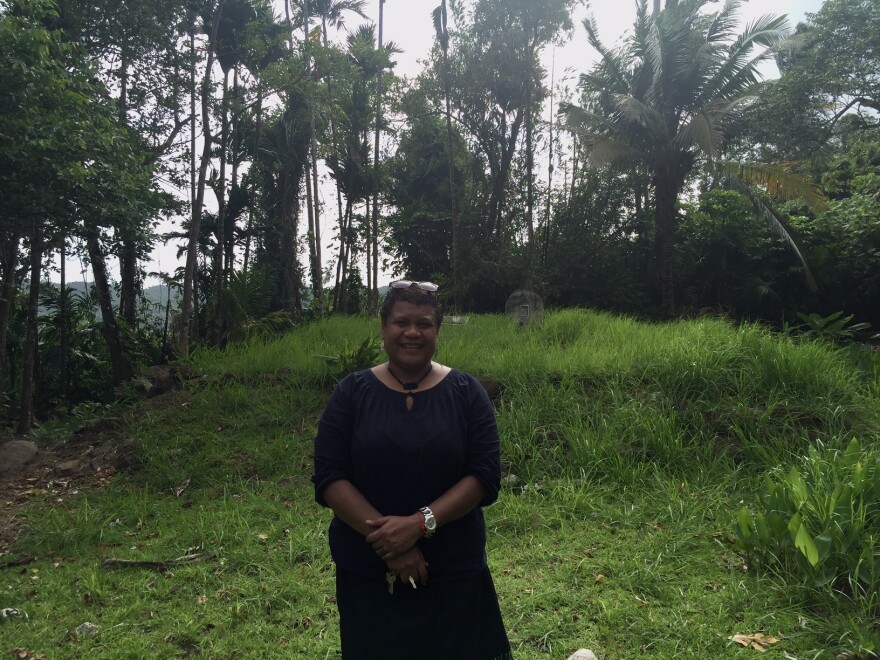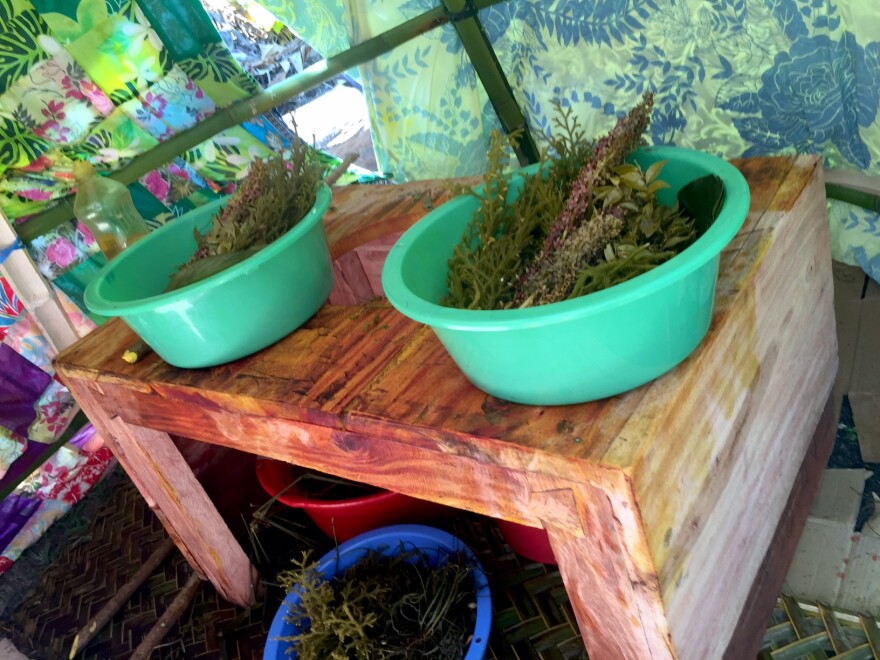

The nation of Palau lies at the western edge of Micronesia, between Guam and the Philippines. Though tiny, Palau is distinct from the rest of Micronesia, with a higher standard of living and largely well-educated population. In a recent visit, HPR’sNoeTanigawa had a chance to learn more about Palau’s culture, which dates back thousands of years.

It was a glorious Pacific day--- with green muffin top mini islands dotting the blue sea, blue for miles. BaklaiTemengil and I sped across the modern span bridges that link Palau’s most populated islands. BaklaiTemengil is Palau’s Minister of Community and Cultural Affairs, and we were heading to one of the country’s most important cultural events, a first birth ceremony, where I would be meeting much of her extended family. She and her husband, Tutii Chilton, drew a vivid picture of changing times on Palau as we made our way to the party.
Temengil noted that Palauan lives are still rooted in nature, but what does that mean? Twentieth century people can’t even imagine it. She said, for example, when her uncle sees a certain flower blooming, he knows what kind of fish are spawning, or if certain birds are eating certain flowers, they know which fish are in season. Crucial knowledge since most Palauans do still supplement their diet by fishing, farming, or gathering.
In addition, births are timed to coincide with the incoming tide, and deaths occur when the tide is going out. Temengil says, building a new house, launching a business, there’s a time and tide for all that. And there’s continuity, too. Traditions rooted in nature have shaped Palauan life for hundreds of years.

Bilung Gloria Salii is the highest ranking woman in Koror, Palau’s most populous state. Called queen Bilung, Salii has been a member of the national legislature and president of Palau women’s union. She says Palau’s money, dance, chants, trees, are all Palau’s artforms.
Bilung’s majestic home in Koror gleams with dark wood. A stupendous array of conch, cones, and nautilus shells, is matched by giant feathery fans of black and red coral. Priceless plates made from turtle shell are the equivalent of money.
By Bilung’s measure, all the preparations for this first birth ceremony are part of the art. I’d heard so much about the steam tents, with herbs, the women sweating and bonding inside. Each family member, of the hundreds here, has a function and a place. Celebratory turtle meat is plentiful, plus noodles, taro; the new mother is radiant, and her women kin step forward in groups to dance and present her with dollar bills. Slathered with turmeric and coconut oil, she glistens, the picture of fecundity.

Tomorrow, a look at how Palau’s matriarchal society works.





